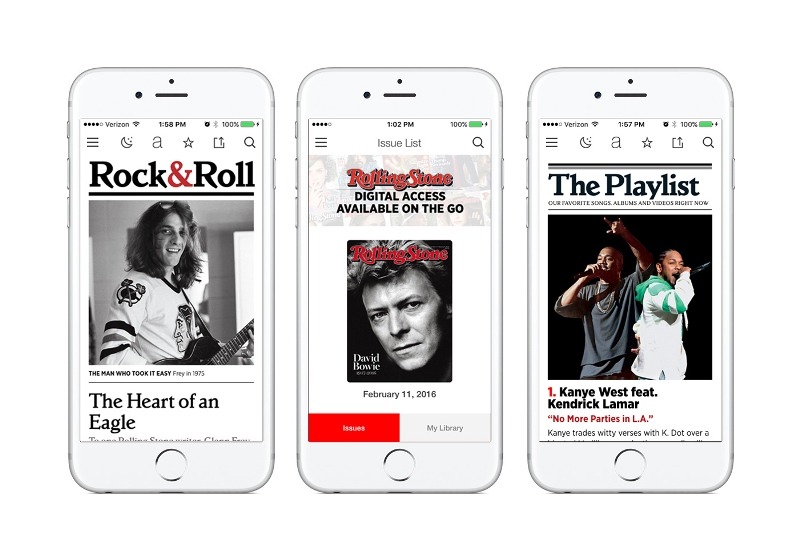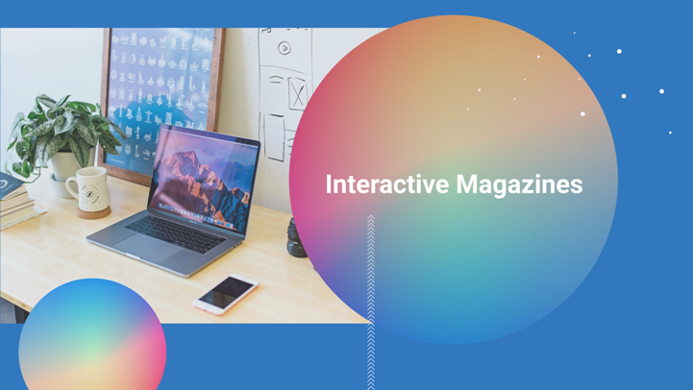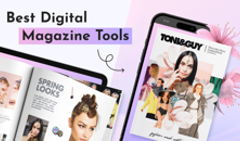Want to know how to make sure no one reads your digital magazine? Take a PDF, make people download it from your website.
That’s it! Now nobody will find your content. Or they will, but wouldn’t want to get it. Or they will download it, but then forget about it three pages in.
Though this may seem like a sad joke, many companies, who aren’t The New York Times, are still treating a digital magazine as a hasty afterthought. It is just so enticing to think that PDF, common as it is, is a decent alternative to a print issue. It has all the stories, all the beautiful pictures, maybe even a couple of links to the promoted items. You can open it in a browser—so it should be enough.
However, in a world of immersive digital experiences, state of the art websites, and click-away online shopping, clunky PDFs don’t cut it anymore. With digital bringing to the table so many opportunities for beauty and interactivity, readers’ expectations are higher than ever. They want browsing through an online magazine to be effortless and fun, they want video stories, they want to buy an item they like right from the page.
So if you intend your digital magazine to make an impact, you’ll need to make it interactive. Feeling discouraged? Don’t be. An interactive format is great for viewers, but it offers exciting benefits for creators as well.
What is an Interactive Magazine?
An interactive magazine is a digital publication that includes videos, GIFs, links, high-resolution images, and other types of rich media. It is typically available under its own URL and optimized for a variety of screens, mobile devices being a priority.
Interactive magazines as browser experiences are much cheaper and easier to distribute, too. They can be embedded into a website, sent via email, or shared on social channels.
Create yours
Types of Interactive Magazines
An iOS/Android App
 Source: Rolling Stones
Source: Rolling Stones
A couple of years back building a bespoke app for your interactive magazine seemed like a worthy, albeit expensive, solution. It gave readers a fantastic experience on mobile devices and offered built-in distribution through AppStore and Google Play. Plus, you could get insights into views, clicks, and buys if you chose to track the app data.
But today, with an average person having 80 apps (only 9 of which are daily used) on their smartphone, it’s almost impossible to make them install another one exclusively to access your content. The maintenance cost with the constant need for updates and bug fixes adds up to the challenges of this solution.
Of course, if you have a strong brand and an extensive readership that you can count on to download your app, this might be the best route for you to follow. The sense of premiality is undeniable, and you can get the readers to focus on your content without much problem.
A Website

Source: Behance
With website and landing page constructors on the rise, you might want to consider building a website as a digital alternative to your print magazine. Perks: you can utilize all the interactive elements there are. Seamless scrolling and stunning web animations, in-line and custom-made videos, and built-in e-commerce modules. Managing a subscription is easy, too.
However, if you consider interactive magazines to be an addition to and not a focus of your business, this option may simply be too much. As with apps, building a website comes with high development and maintenance costs. Cheap constructors won’t always meet your needs, and doing everything in-house means hiring a team of designers and developers specifically for the project.
Bottom line: unless you are a publishing house making money directly from periodicals, turning your magazine into a website most likely will not pay off.
A Flipbook
Flipbook is an interactive format for digital publications, magazines included. With it, your online magazine works right in a browser and looks like a real thing that you can flip through. But what’s more important, it can include videos, links, images, GIFs, and forms and quizzes which make your magazine truly interactive.
Some digital magazine software lets you build flipbooks from scratch, while others, such as FlippingBook, let you convert your PDFs into flipbooks and publish them online.
This is a perfect option if you publish magazines as part of your marketing efforts. On the one hand, it has all the advantages of interactive publications, being immersive and engaging. On the other hand, it is much cheaper to produce and upkeep—you can do everything single-handedly in less than an hour.
Benefits of Making Your Magazines Interactive
As we’ve discussed above, the main reason why digital magazines should be interactive is that readers expect it and won’t settle for simple and dull PDFs. But is there anything in it for the creators? Yes, there is. Here are some less obvious benefits you get from enhancing your magazines.
#1 Track interactions with your content
How many people view your publication? What stories get the most reads? Which ads perform the best? These are crucial questions for every marketer, but with a print magazine or a PDF, you could only guess the answers. Interactive magazine creators like FlippingBook let you track your magazines and get valuable marketing insights.
You can gather info about views, clicks and more, and as a result, make data-driven decisions about the content and its promotion.
#2 Grow your readership with lead collection tools
If you use magazine previews as a lead generation technique, FlippingBook can help. You can place a lead collection form on any page of your magazine to encourage people to sign up for more.

While typically marketers gate digital magazines with a sign-up form on the website, it creates an additional barrier between people and content, which leads to some potential lead losses. Injecting a lead form into the content feels less obtrusive. And with a Zapier integration, you can seamlessly pass the data right into the CRM of your choice or Google Sheets list for easier management.
💡According to our research, 90% of emails submitted through the FlippingBook Online lead capture form are valid. Thus, you get high-quality leads right from your magazine!
#3 Distribution is cheaper and easier than ever before
PDF doesn’t leave you much choice in terms of distribution, a download link on the website being the only option. But if you turn your PDF into an interactive magazine, the possibilities for sharing are numerous.
For one, you can embed it into your webpage as in the example below:
Create yours
You can also share it on your Facebook or Twitter feed as neat-looking previews, or send it out via email—if that’s what your readers prefer. Or just use the link to your interactive magazine as a landing page and drive traffic to it with paid ads and the help of SEO.
And thanks to the HTML5 format, you can be sure that your audience will have a great reading experience with your content on any screen.
Conclusion
While you may feel that making digital magazines interactive is an obligation, the format actually is a win-win for both parties. And as a creator, you gain as much value from it as your readers do.
Ready to create your own interactive magazine? Grab a free 14-day FlippingBook trial to get started. And if you need inspiration and help, feel free to check out these stunning digital magazine examples and our how-to guide. Good luck!





